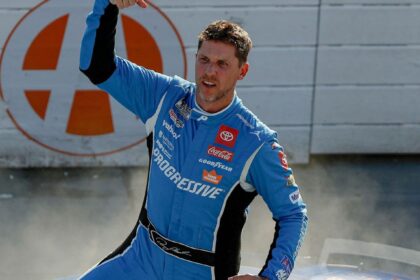
However, today, the situation is different. NASCAR, like Gretzky, is taking many risks. But unlike its predecessors, there now seems to be more planning behind each decision. If they fail, they learn and move on to the next idea, demonstrating a remarkable ability to adapt. An example of this mindset is the construction of a temporary Major League Baseball stadium within a circuit for a single game, as the Atlanta Braves and the Cincinnati Reds will do at Bristol Motor Speedway. This initiative, although it may raise doubts among purists, reflects NASCAR’s willingness to try new things. If it works, it will be repeated; if not, something different will be tried. Joey Logano, current Cup champion, sums up this philosophy: “I agree with the willingness to try new things, as long as we stay true to what defines us.” This season, races on street and road courses have increased, and there has been a return to iconic tracks like North Wilkesboro and The Rock. In addition, the championship weekend is being rotated to different circuits, starting at Homestead-Miami Speedway, a change that responds to the fans’ demand for more races on short tracks. Ben Kennedy, NASCAR’s executive vice president, highlights the importance of innovating without losing sight of the category’s history. The move of the Busch Clash from Daytona to Bowman Gray Stadium is an example of this connection to the past. The driver Chase Elliott also highlights this change in mentality: “If it doesn’t work, nothing happens. Next year, we’ll do something else.” The flexibility shown during the pandemic, when NASCAR became the first major sport to return to action, allowed for adaptation and the implementation of new strategies. This, added to the expiration of long-term contracts with the circuits, freed NASCAR from old habits and opened the door to a new business model. As the release of the 2026 Cup Series schedule approaches, NASCAR has experienced a summer of experimentation. The remaining events of the season are well-known races on familiar circuits, with the novelty of the Cup’s second visit to Iowa Speedway. In addition, a street event at a naval base in San Diego was announced for Father’s Day 2026. The In-Season Challenge, although initially criticized, became a showcase for young Ty Gibbs and Ty Dillon. The future of NASCAR is uncertain, but exciting, as long as classic elements like the Daytona 500 and the Southern 500 are maintained. Successful ideas, such as the Clash’s change, the revitalization of North Wilkesboro, and occasional street races, will continue. Innovative ideas are expected to return, and possible changes to the points system and the incorporation of a new manufacturer are being considered. NASCAR is learning from its mistakes and making decisions with a long-term vision. Many attempts, some failed, but also many successes.NASCAR is taking many risks, and even if they fail, they learn and adapt.
Alofoke Deportes











